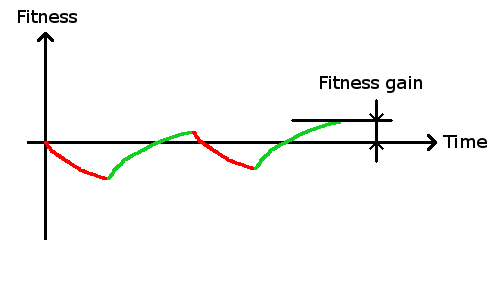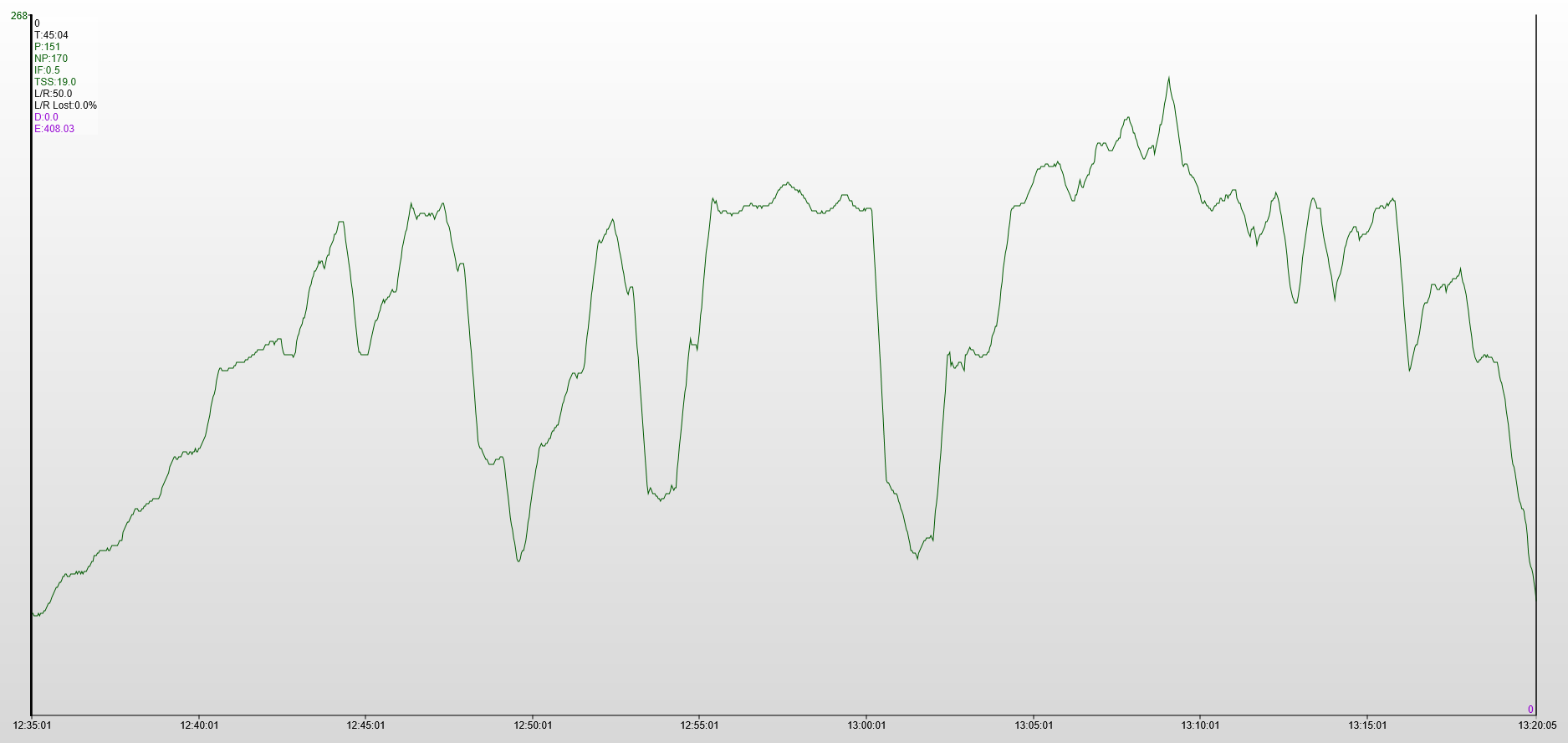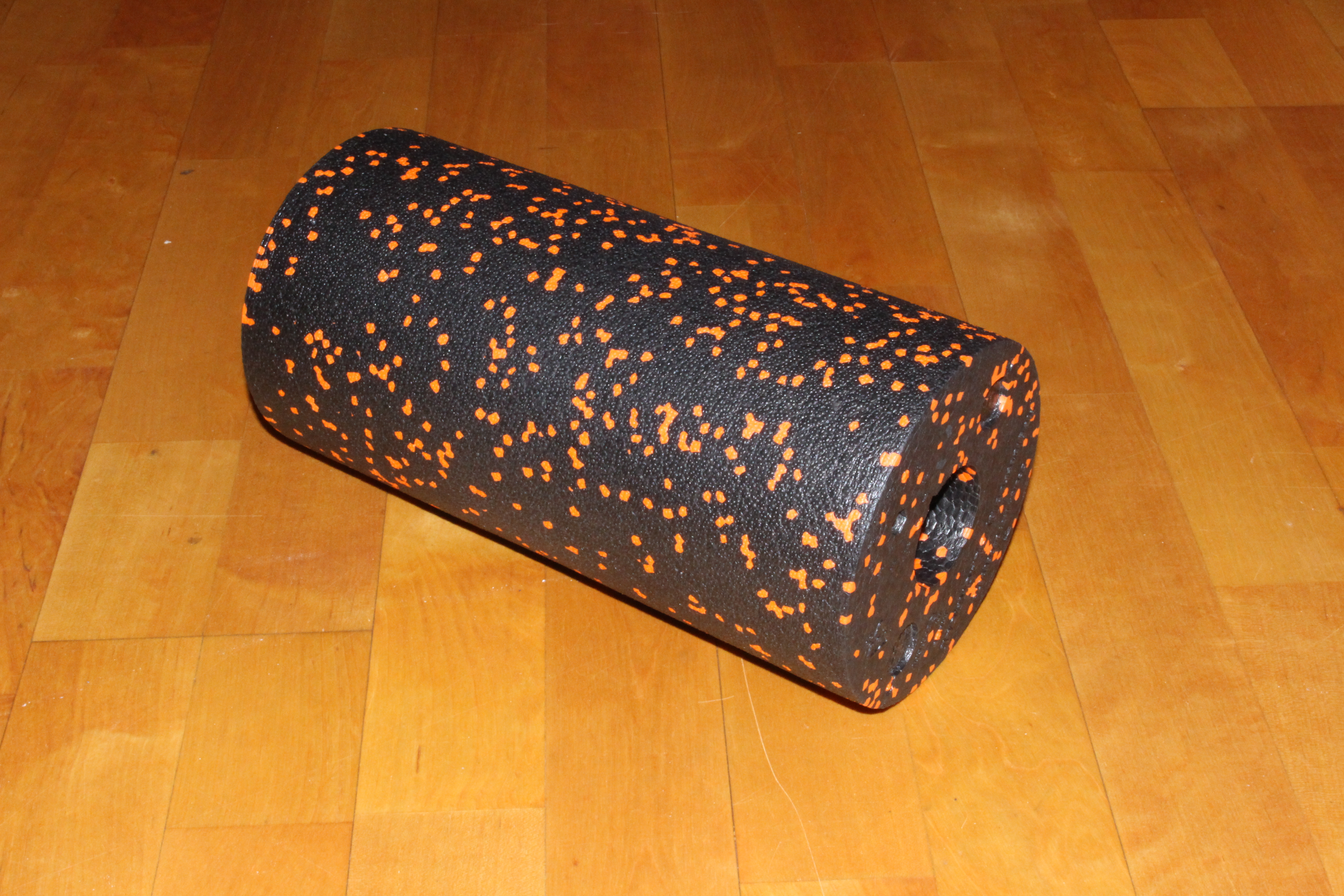Recovery is essential for every athlete. During the recovery period the body adapts to a previous training stimulus. So effectively no gain in power is done during training but during the recovery period afterwards. Training and recovery are therefore closely related - focusing solely on training is not good because recovery is so important.
Due to the training load the body gets fatigued and it is no longer possible to produce the same power output as before the training. The recovery period following the training will let the body recover. In the best case you gained fitness after this cycle of training and recovery.
There are different methods to combine training and recovery periods to block. The aim is to improve fitness and power output even more. One often practiced example is a block with 3 days of training followed by one day of recovery (active and/or passive recovery).

The above picture schematically shows the sequence of training and recovery. Loss of fitness due to the training load is shown in red. During the following recovery period (shown in green) the body adapts to the training stimulus and gets better - you actually gained fitness. This sequence is then repeated again and again.
Active recovery stimulates blood flow. This improved blood flow caused by an easy training session helps to reduce metabolic products which leads to a shorter recovery time. Easy pedaling on the bike or smooth movements under water are the best ways to reduce recovery time. Furthermore, water seems to have a positive effect on recovery time du to its pressure.
The following picture shows a plot of the power data of such a recovery training session. Most of the time was spent in zone 1. Usually such training sessions last for up to one hour but everybody has its own preferences. Some athletes prefer sessions of 2 hours in the lower L2. Variety is definitely an advantage, as it is in every training session.

Passive recovery is everything wher you do not move actively. Examples are training with the Blackroll, massage, stretching, taking baths, heat and cold treatment and especially sleep. Enough sleep is essential for a good recovery and is often neglected. The best trainig plan and the best recovery methods do not help if you do not get enough sleep. A short nap after the training is an often used method to shorten recovery time.
After the training nutrition is very important. Enough amount of protein and carbohydrates are essential to refill the carbohydrate stores which leads to a faster recovery. An intake of about 0.3 g per kg body weight of protein directly after the training is recommended. This corresponds to 20 to 25 g protein for an average male. Not only the amount is important but also the composition. Leucine, an essential amino acid, is considered very important for muscle development. Approximately 2 to 5 g are recommended after the training. Directly after the training the ability to store nutrients into the muscles is better.
The Blackroll (foam roller) can be used to improve the flexibility and the power of the muscles.

Exercises with the Blackroll can have a similar effect to a massage. But this massage can be done by yourself (self-massage). Recovery time is shortened and muscle tenseness are relieved.